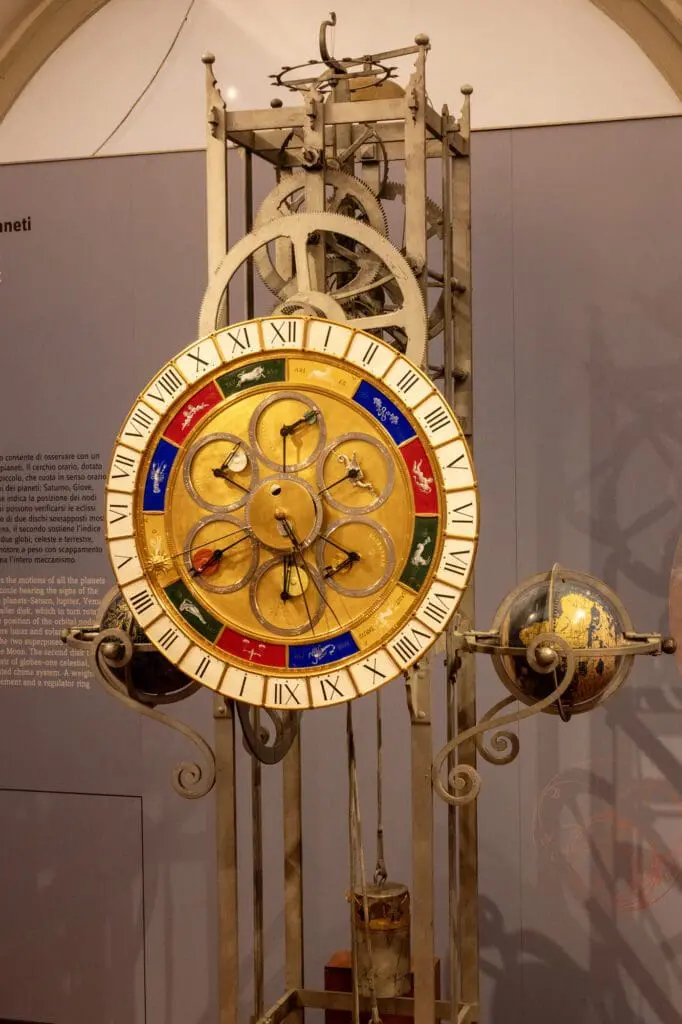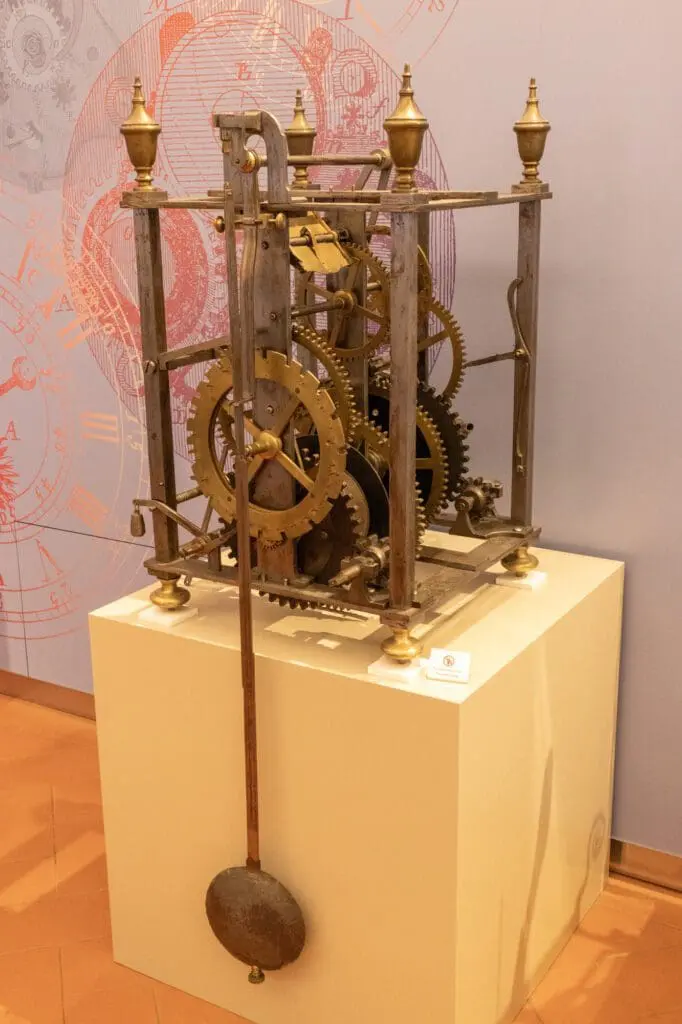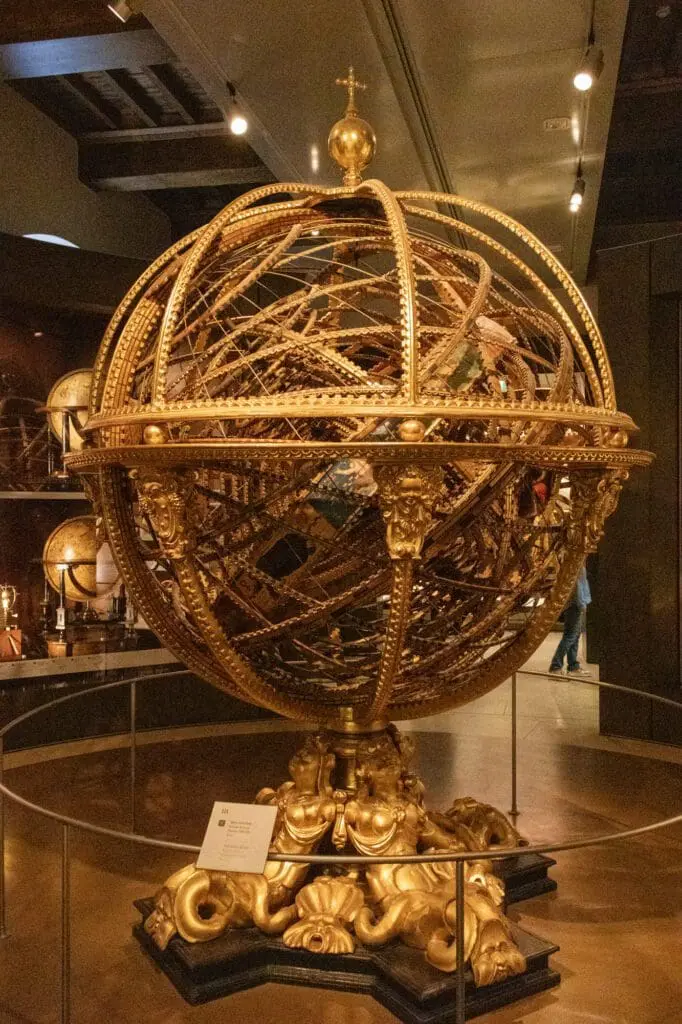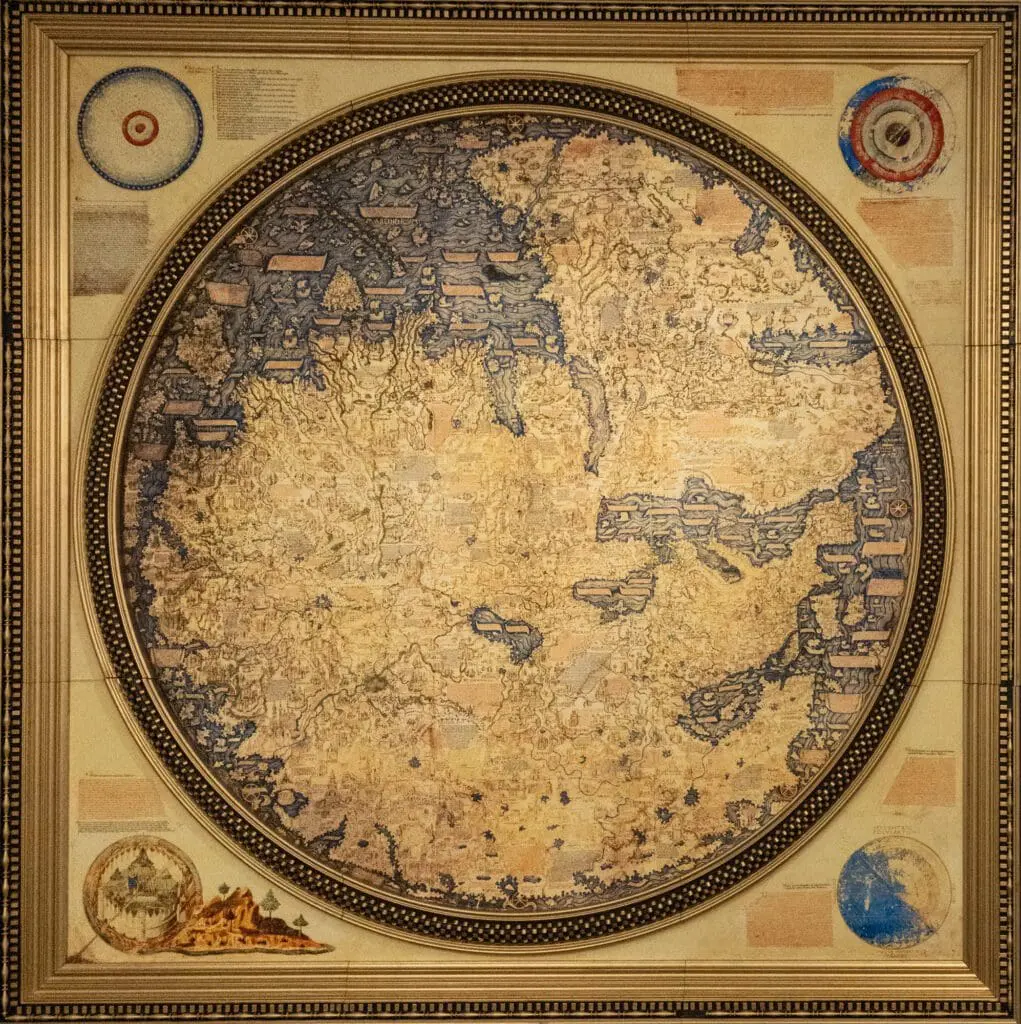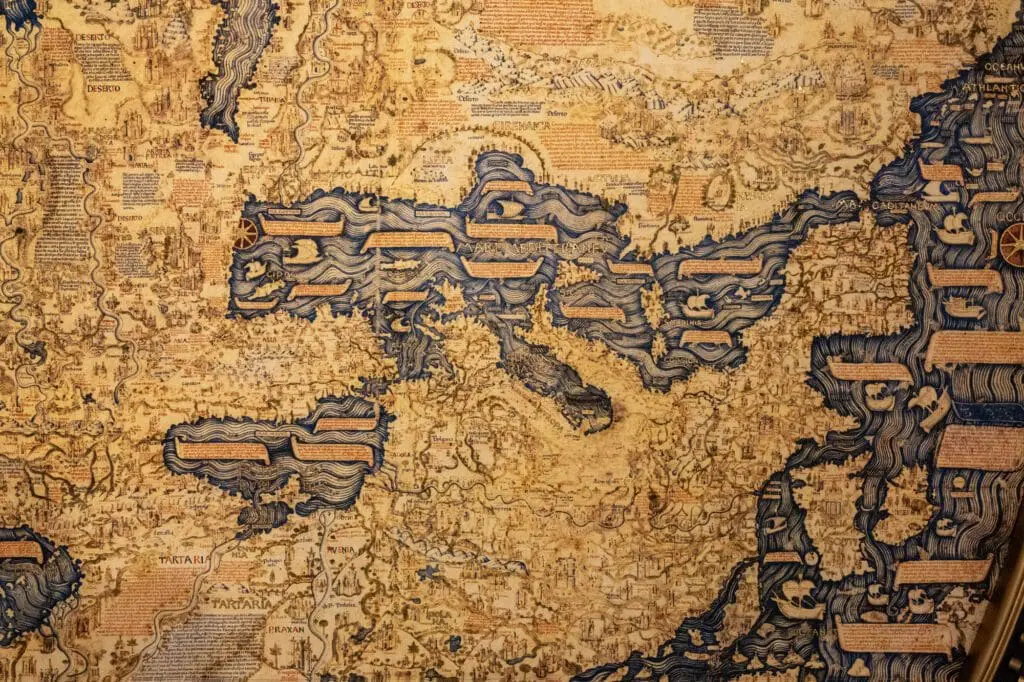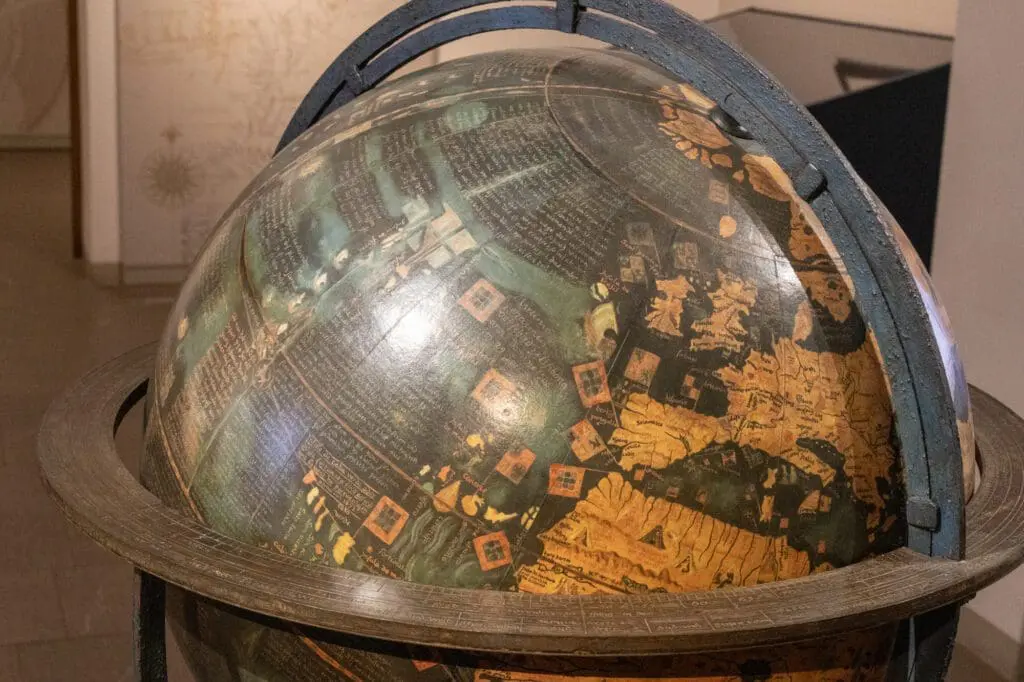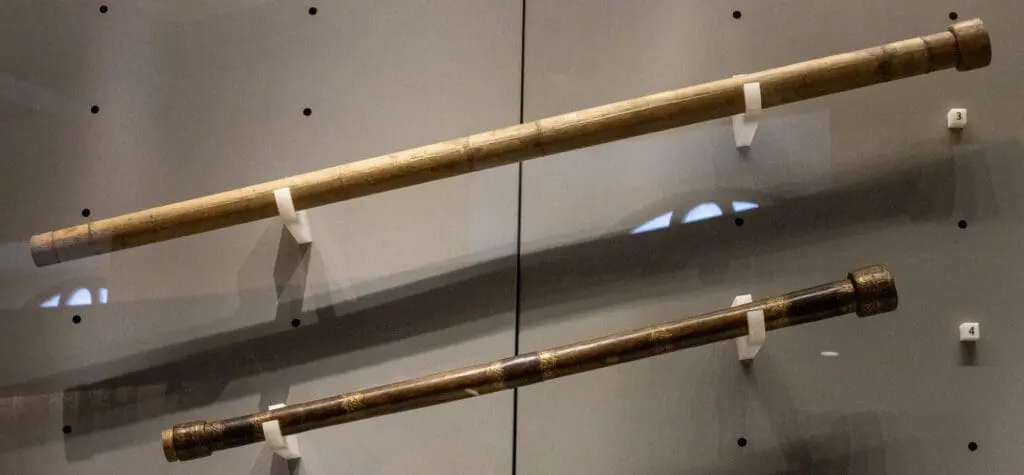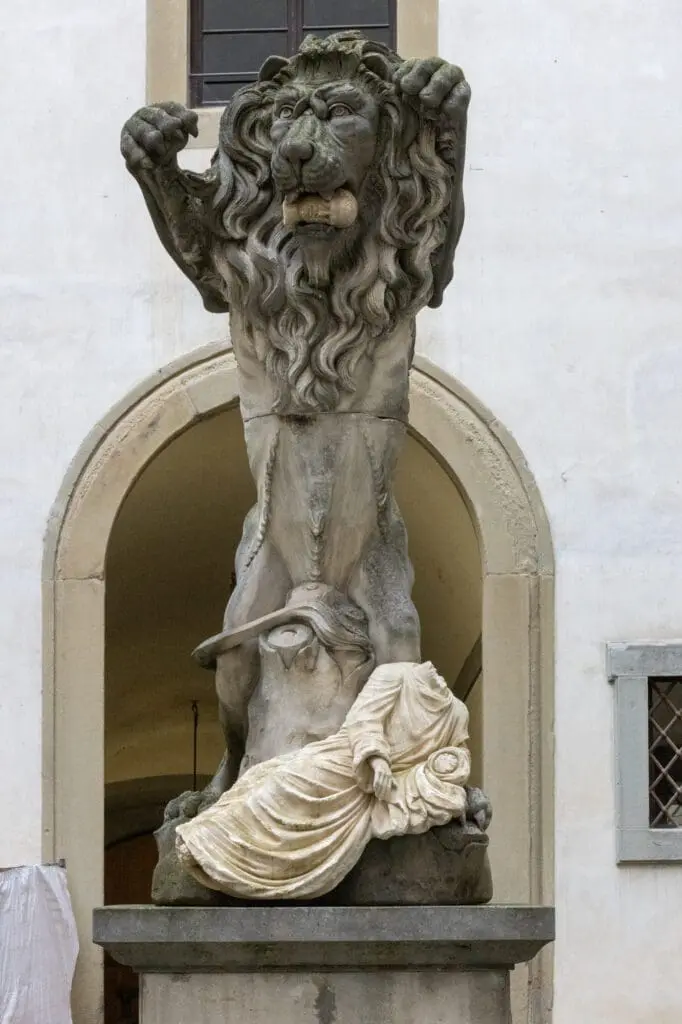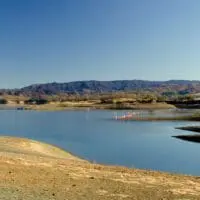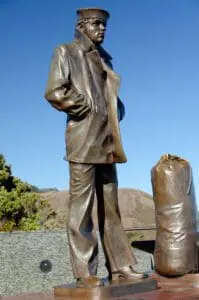You can enlarge many of the images in this post by clicking them. High resolution versions of the images, and many more besides, are available from our online photo gallery.
Because Tuesday was supposed to be the first day of significant rain during our Florence stay, we opted to start visiting museums. We began with Museo Galileo, which is devoted to the impact Galileo, and his scientific/engineering associates, had on both the rise of Tuscany (Venice and Florence) and the rest of Europe.
But along the way we got to see a few more neat reflections in the Arno (the right hand side versions are posterized):
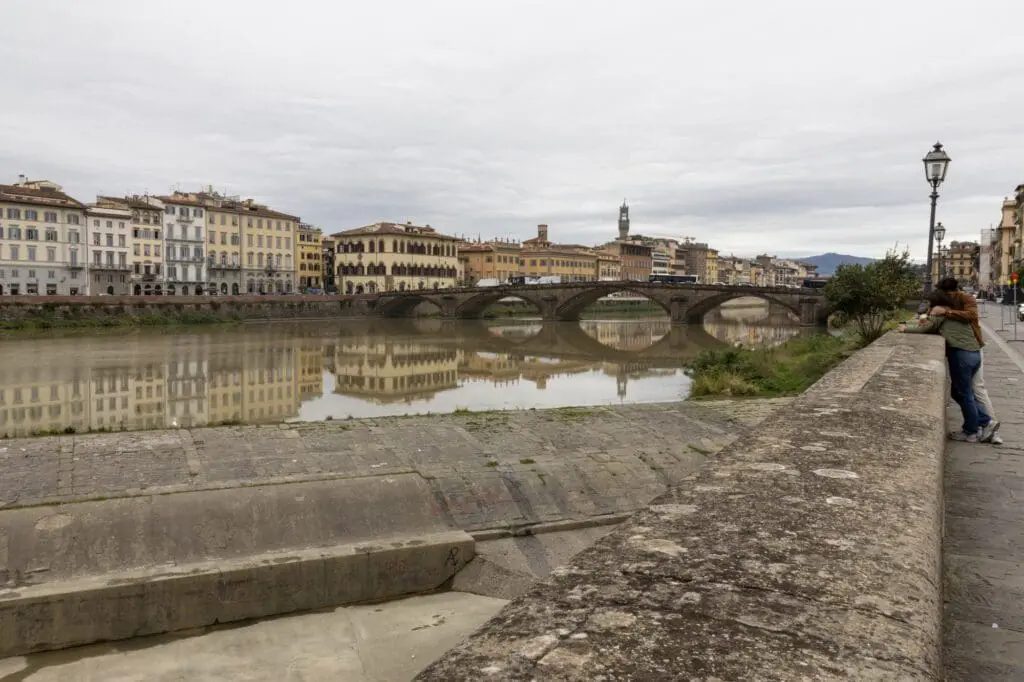
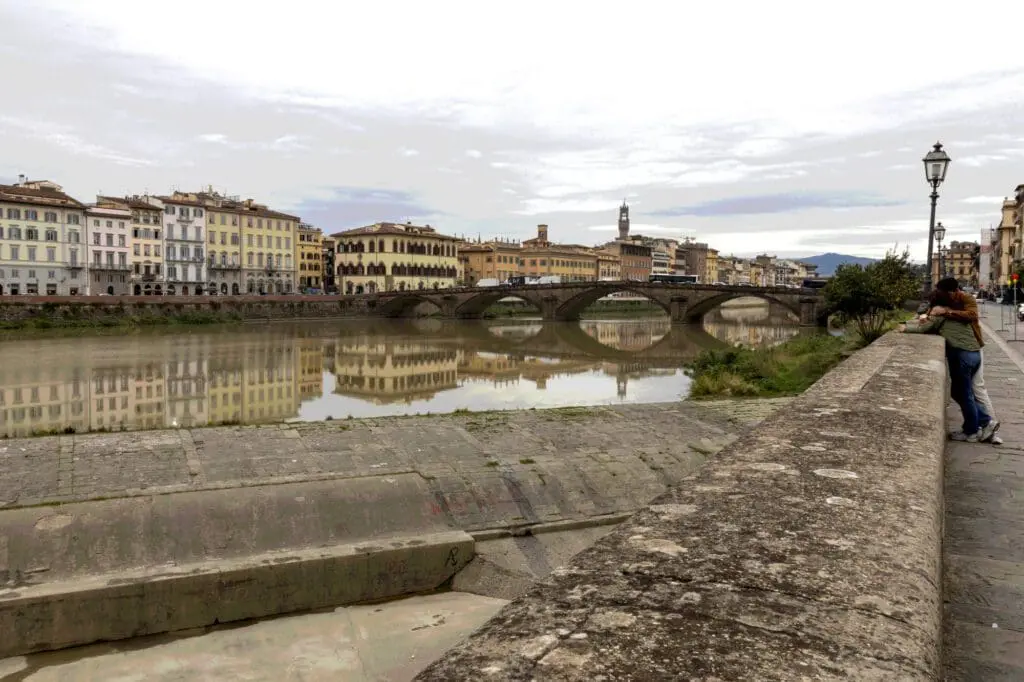
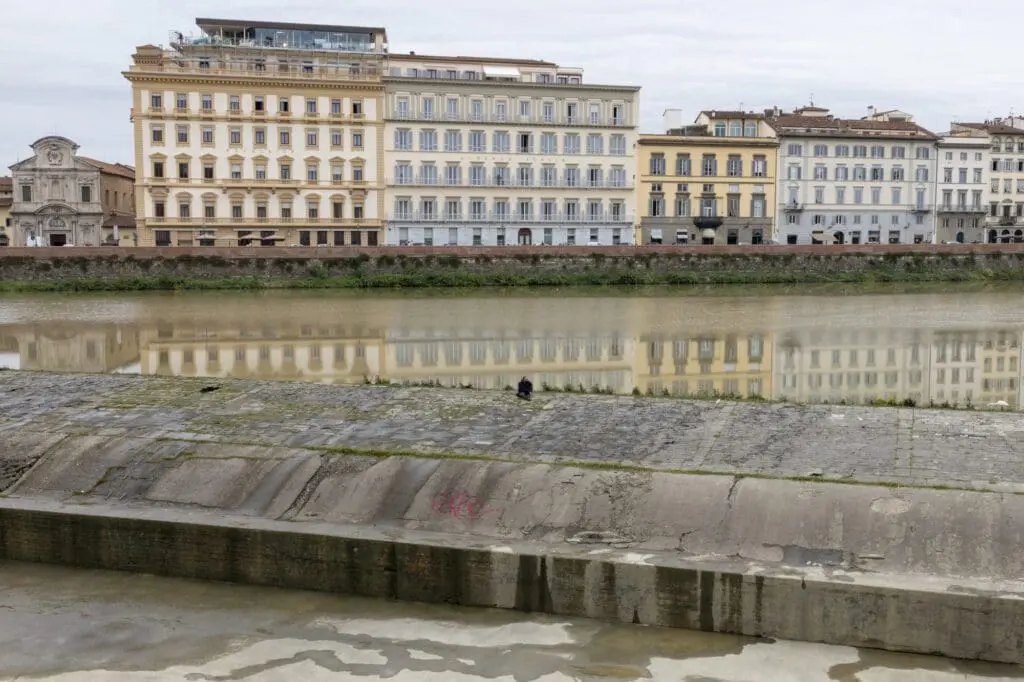
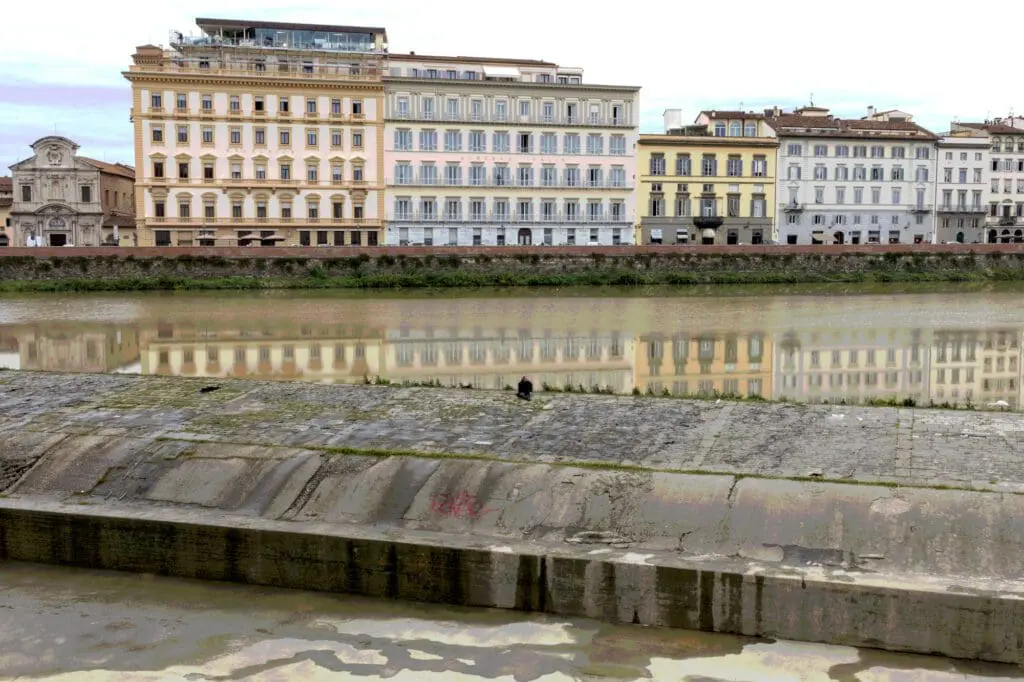
Museo Galileo is chock full of early Renaissance clocks, navigational devices and early scientific instruments.
It also has some neat exhibits illustrating the physics discoveries Galileo and his peers made, which set the stage for the development of Newtonian physics, the first really rigorous description of reality humanity came up with.
This was one of my favorites. Pendulums are useful in clocks because the time it takes for them to make a complete back-and-forth arc depends on the length of the pendulum and the weight of its end1…mostly. There is a minor effect that relates to how big the arc is, which makes them not quite perfect timekeepers.
But you can make them much more accurate by adjusting the length of the pendulum as it swings through the arc. That’s what those curved, machined pieces of metal in the photograph to the right do: by displacing the wire which forms the top of the pendulum by different amounts over the course of its swing, the pendulum becomes isochronous, meaning its swings always take the exact same amount of time, regardless of how big the arc may be for a particular iteration.
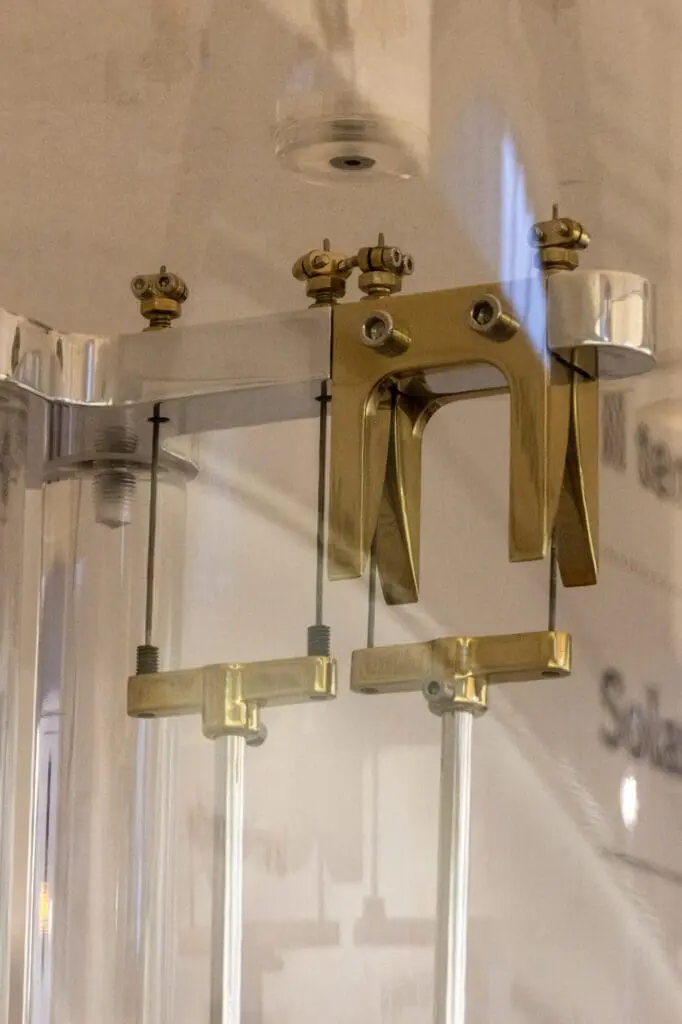
You can see this in the video below. The two pendulums, only one of which is adjusted to be isochronous, start out together but quickly get out of phase.
At the same time detailed knowledge of the physical world was exploding, the Florentine’s worldview was exploding, too, as more and more European explorers and traders made longer and longer voyages around the world. As a result, world maps from the period were evolving very rapidly.
The “standard map” of the world — the Mercator projection — had also not been crowned, so many different map styles were in evidence. Here’s an early detailed map showing most of Europe and the MidEast, much of Africa, and parts of central and eastern Asia.
But notice that the map is, to our eyes, upside down, with South being at the top. That causes the Mediterranean Sea and the Iberian Peninsula, among other things to look like something from another planet2.
The lack of planetary knowledge extended to globes, too. It may not be obvious from the position of the globe3, but it could’ve been entitled “One of Our Hemispheres Is Missing”. Because there’s not a trace of either North or South America.
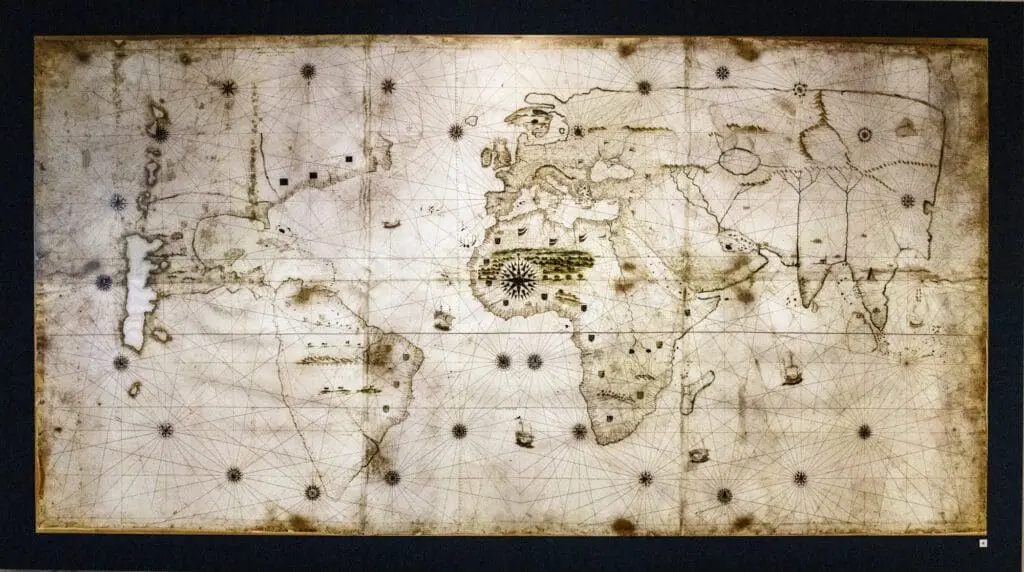
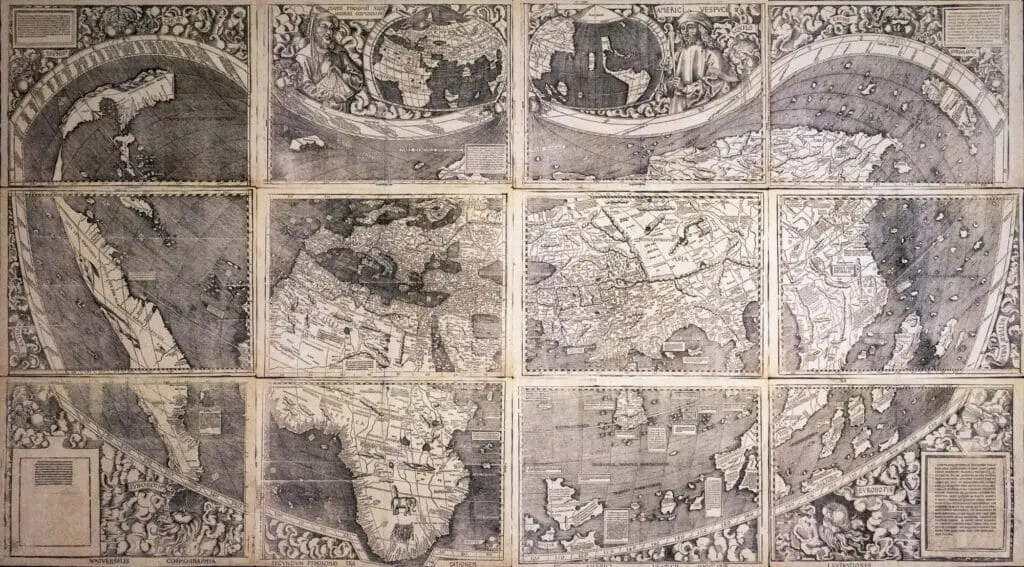
No museum calling itself Galileo’s Museum would be complete without a bust of the scientist. Here it is, along with one of the early lenses he created. Which was so remarkable it got gussied up to a fare the well.
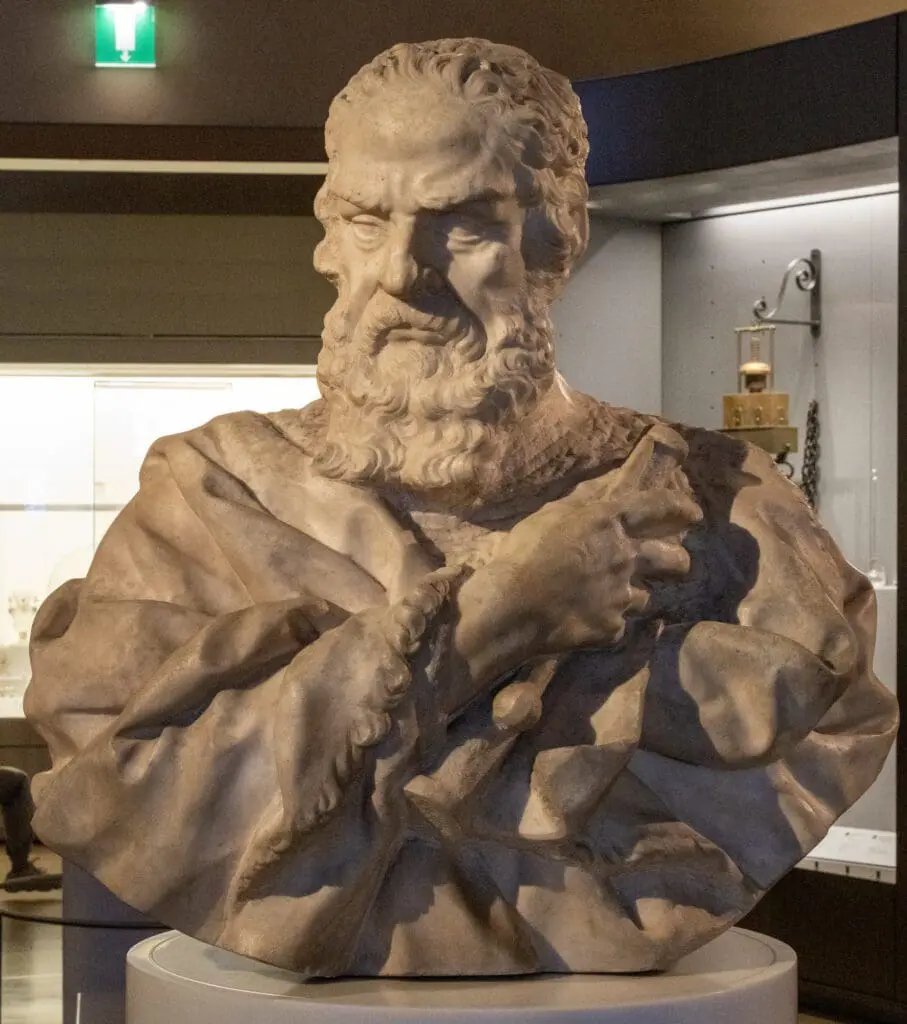
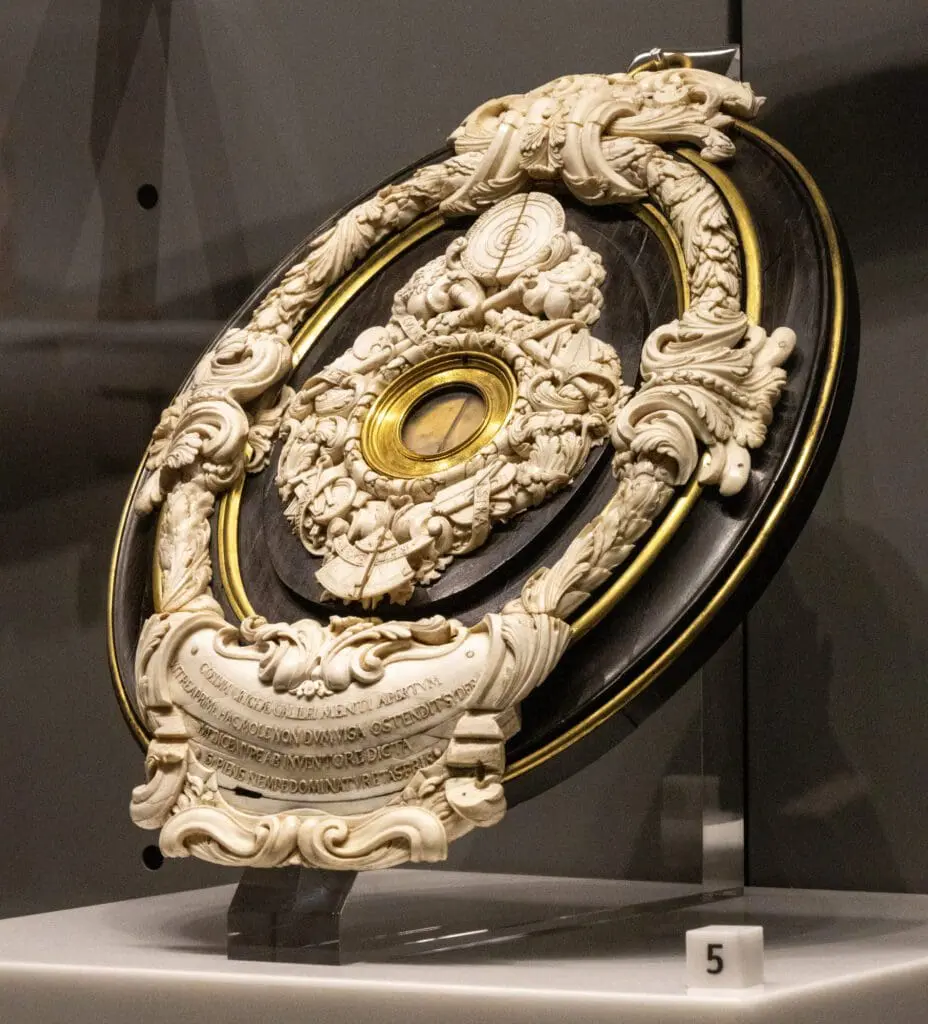
But for me, this was the crowning exhibit: two of the most powerful weapons ever created by humanity.
What are they? A couple of Galileo’s early telescopes. Which challenged and wrecked centuries worth of thinking about the real world and how it worked, and thereby opened the door to all the scientific, technological and quality of life progress which came afterwards.
Not bad for a few bits of glass, wood and metal!
There were also examples of early mechanical calculators and microscopes.

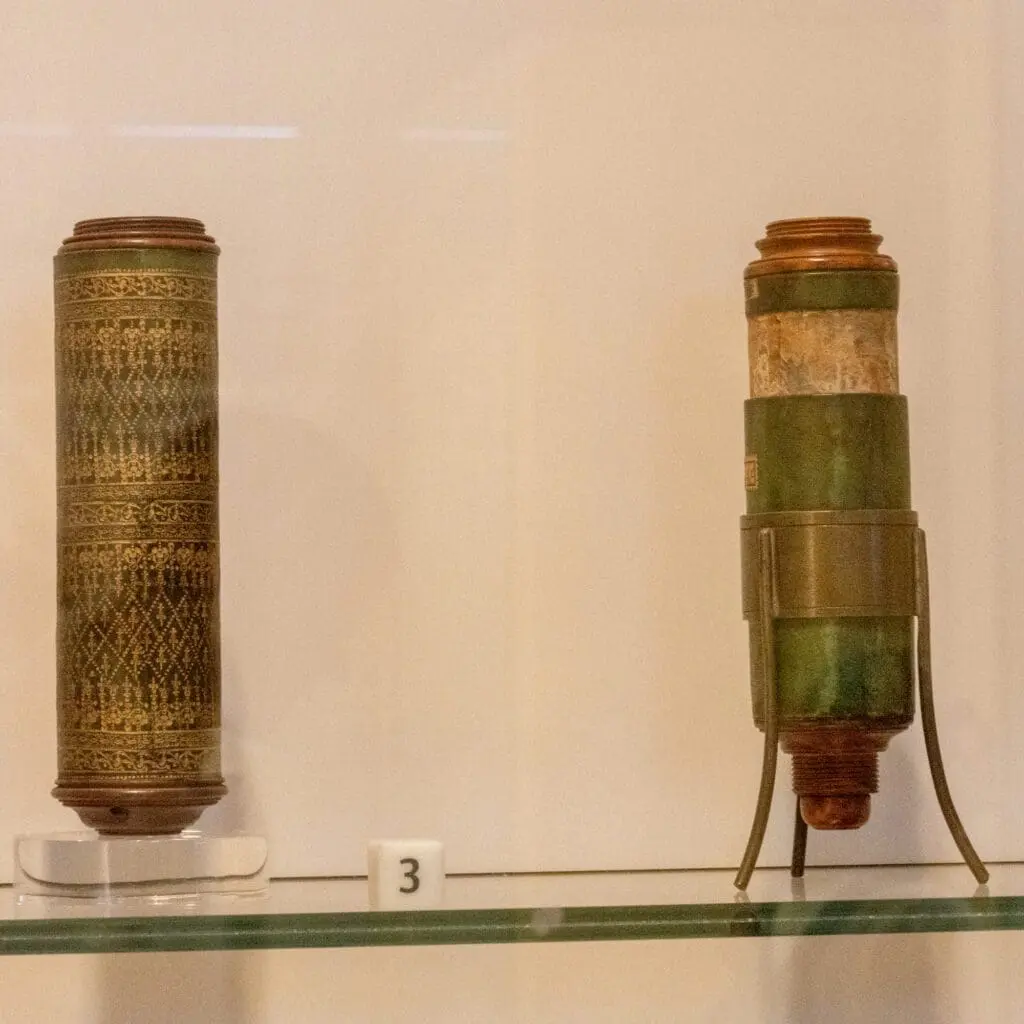
I think I’ll stick with my iPhone. And I doubt my buddy Ed the pathologist will want to give up his modern microscopes, either.
After leaving the Museo Galileo we headed over to the Palazzo Vecchio, hoping to spend the afternoon enjoying its exhibits. Unfortunately, there are still so many tourists in Florence that we couldn’t get access until very late in the day, so we decided to come back tomorrow after purchasing tickets online.
As well as this guy, who reminded me of what the Cowardly Lion would no doubt look like after he got some courage. I doubt he would’ve decapitated Dorothy, though.
Technically, its angular momentum, I think ↩
It also reminded me of the first time I saw a map titled “An Aussie’s View of the World”. It, too, had the South Pole at the top of the map. And it, too, looked like a completely alien world. ↩
I tried to arrange things properly but I couldn’t get it to balance in the right position ↩

